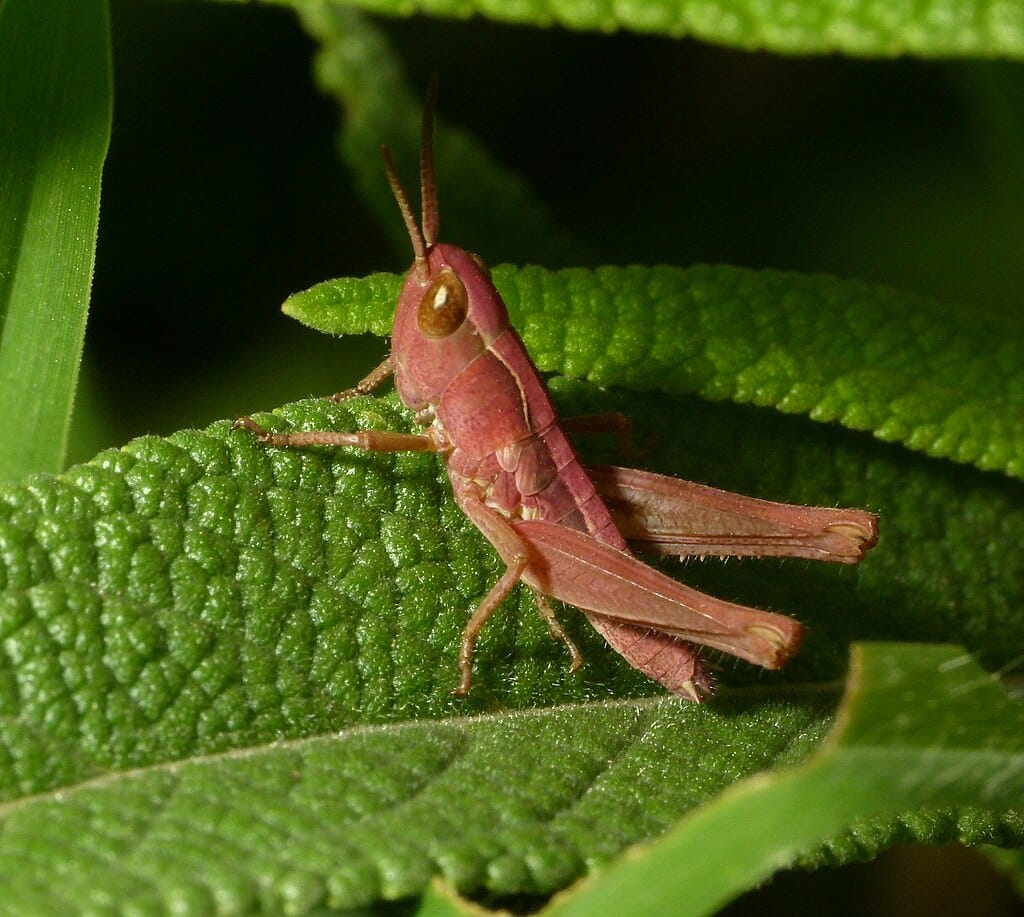Pink Grasshoppers Really Do Exist
In our never-ending quest to explain why unexpected colors work as fly patterns I found some insights in an unlikely place... the museum...

December 2023
In our never-ending quest to find a scientific basis for why unexpected colors work as fly patterns I found some interesting insights in an unlikely place... the natural history museum.

In an exhibit focused on the varieties of colors found across the natural world, tucked in a corner away from the flashy UV scorpions, and bright varieties of birds, was a kiosk about genetic anomalies in grasshoppers. When the natural expression of genes that produces colors get out of whack, you get some hoppers with more red pigments than the usual, and the result is a pink grasshopper. Different than albinism, this phenomenon known as erythrism, produces the striking red-shifted-discoloration. Oddly enough some scientists believe that the genes responsible for erythrism are apparently dominant, suggesting it's commonly passed on from one generation to the next. BUT, bright pink grasshoppers (usually the nymphs) are likely to be easily picked out by predators and rarely reach adulthood. Other scientists disagree though, and expect this genetic oddity to be recessive, like red-headedness in humans.

Either way, everyone seems to agree that finding these pink hoppers are rare, and much more likely to be nymphal hoppers than adults. But as many trout anglers know, pink is a great color for a grasshopper fly, and maybe trout are partly responsible for why humans rarely encounter a pink varietal. Are they really that rare? Well don't ask any angler who fish with them... They might suggest otherwise...
Pink Hoppers of note: Pink Pookie, Moorish Hopper, Chubby Chernobyl, Rainy's Grand Hopper, Umpqua Thunder Thighs

Sources:
- Denver Museum of Nature and Science. Accessed 2023. Color Mutants.
- Thomas-Remero, L. E. 2022. The Pink Grasshopper: A Fascinating Find. https://myanimals.com/animals/wild-animals-animals/invertebrates/the-pink-grasshopper-a-fascinating-find/
- Roselien, R. Accessed 2023. The pink grasshopper - a story about erythrism. https://www.roeselienraimond.com/the-pink-grasshopper-a-story-about-erythrism-and-being-different/
- Tiffany, K. 2015. The Verge Review of Animals: the pink grasshopper. https://www.theverge.com/2015/8/2/9073455/the-verge-review-of-animals-pink-grasshopper
- Wikipedia Commons. Accessed 2023. Image of Pink Grasshopper.




